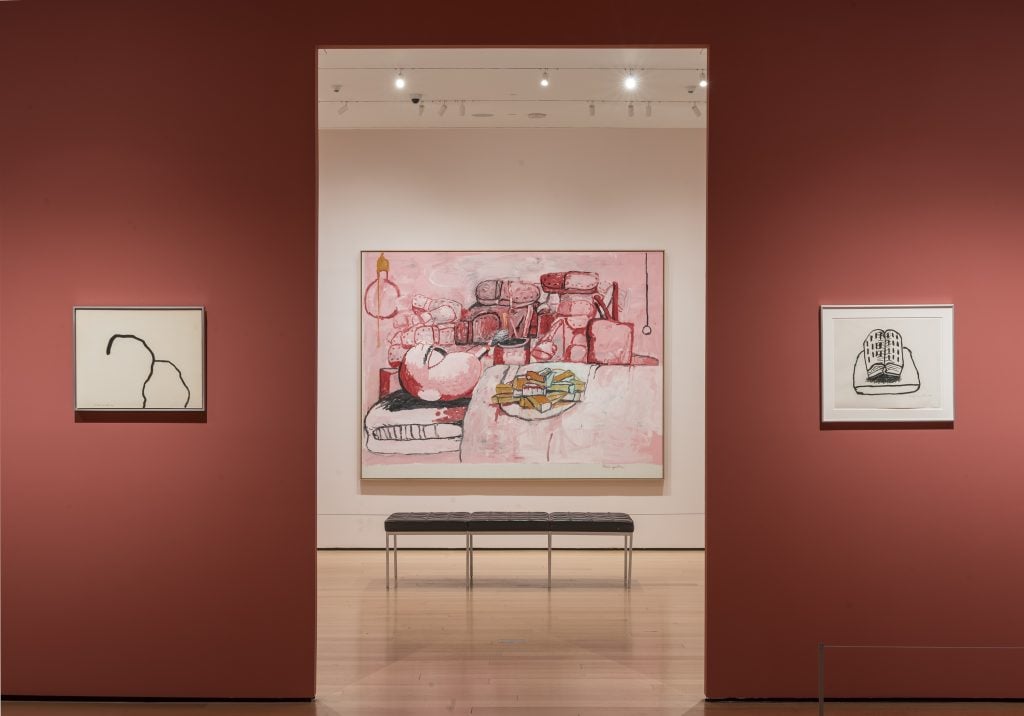A stoic young Black man sits at a kitchen table, holding a cigarette just beyond his mouth. He stares ahead, lost in thought, as an open window showcases clouds in a blue sky. Daylight only partially trickles into the room through a half-drawn green shade. The work is Philip Guston’s Sunday Interior (1941), now on view in “Philip Guston Now” at the Museum of Fine Arts, Boston, and it demonstrates the New York artist’s interest in depicting the experiences of Black Americans even at an early stage of his career.
Sunday Interior also includes many repeated motifs—a window, a green shade, smoking, and timepieces—to which Guston continuously returned during his career. Throughout the show, these motifs and others—paintbrushes, easels—in paintings such as Female Nude With Easel (1935), Open Window (1969), and Shade (1973) are breadcrumbs leading to the Ku Klux Klan paintings first exhibited in 1970. That subject matter sparked a controversial decision by the show’s organizers to delay the opening for two years.
Now, an expanded curatorial team in Boston is presenting an exhibition loosely organized chronologically and stylistically over seven galleries (including a processing room and “off-ramp” that allows viewers to avoid the Klansmen works altogether). In essence, the curators present Guston’s studio as a site of privileged resistance.
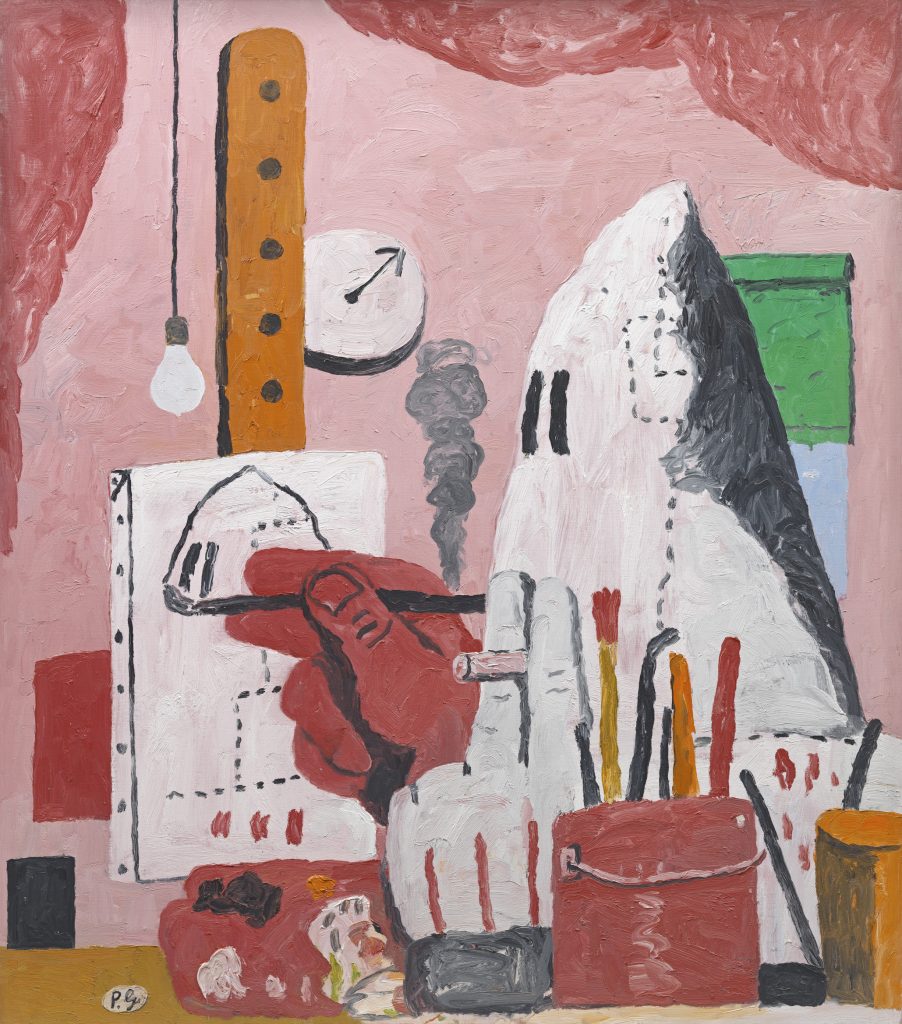
Philip Guston, The Studio (1969). Private Collection. © The Estate of Philip Guston, courtesy of Hauser & Wirth. Photo: Museum of Fine Arts, Boston
This is most compellingly argued with the installation of The Studio (1969), which features a self-portrait of Guston as a Klansman. It hangs in a freestanding “room within a room” in the gallery of other Ku Klux Klan works, and is accompanied by drawings related to the painting; images of Guston’s workspace in Woodstock, New York; and a reproduction of Piero della Francesca’s The Flagellation of Christ (1455–60), which the artist lived with for most of his life. “I want to look at [it] when I have eggs and coffee in the morning or my drinks at night,” Guston said of the work, according to a wall label.
The “room within a room” is a subtle, graceful foil to the more obvious “emotional preparedness” trigger warning at the show’s entrance. By the time visitors reach this inner sanctum, they are primed to recognize the open window, green shade, burning cigarette, and clock as perennial symbols of interiority, and to understand the effort Guston took to establish these metaphors.
Once inside the boxed-in space, the portrait confronts us. We can’t step away to view it at a distance (mimicking Guston’s insistence of always painting up-close), and the space is too claustrophobic to spend too much time with it.
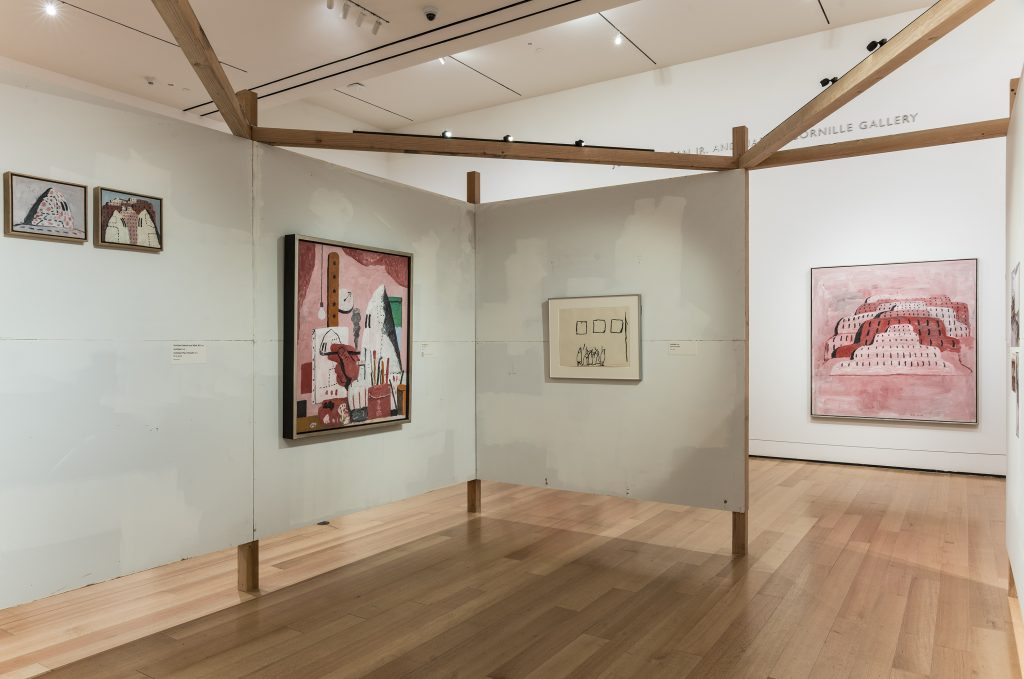
Installation view of “Philip Guston Now” at the Museum of Fine Arts, Boston, Linde Family Wing for Contemporary Art. Photo: © Museum of Fine Arts, Boston.
The room is set up like a stage of sorts, with The Studio as the show’s narrative apogee. And storytelling is in fact the main strength of the recalibrated exhibition, which unfolds as a nuanced drama about Guston’s struggles with figuration and the futility of painting in the face of personal and public injustice.
This socially driven biographical approach was always the show’s focus (as the catalog confirms). Guston’s voice figures prominently in the wall text and labels, and the curators have achieved a sensitive balance between interpretation and image, allowing Guston mostly to speak for himself.
This cinematic structure follows Guston’s own approach to the Klansmen paintings. “The idea of evil fascinated me,” Guston said in 1978 of his motivation for the series. “What would it be like to be evil? To plan and to plot? I started conceiving an imaginary city being overtaken by the Klan. I was like a movie director. I couldn’t wait, I had hundreds of pictures in mind, and when I left the studio I would make notes to myself, memos: ‘Put them all around the table, eating, drinking beer.’”
But, as with a film’s post-production, the details have been heightened in the exhibition. In the two years during which the show was postponed, the narrative focus shifted to draw more curatorial attention to the Klansmen paintings, and Guston’s evolution in stylistic and social consciousness towards them. The exhibition now continuously gestures toward the 50-year-old paintings and how the conditions of white supremacy continue to shape our society.
Viewers are made to understand Guston’s reasons for joining the Marxist John Reed Club in Los Angeles, where the L.A.P.D.’s anti-Communist Red Squad destroyed his mural depicting the plight of the Scottsboro Boys, nine Black teenagers falsely accused of rape. They are guided through the softening of his figuration into near-total abstraction after he moved to New York in 1936. They see his progression into total abstraction and freedom of gesture as he attempted to understand the Holocaust in works such as Review (1948–49), Red Painting (1950), and Dial (1956). Guston’s work was always about the body and the social constructs it comes up against.
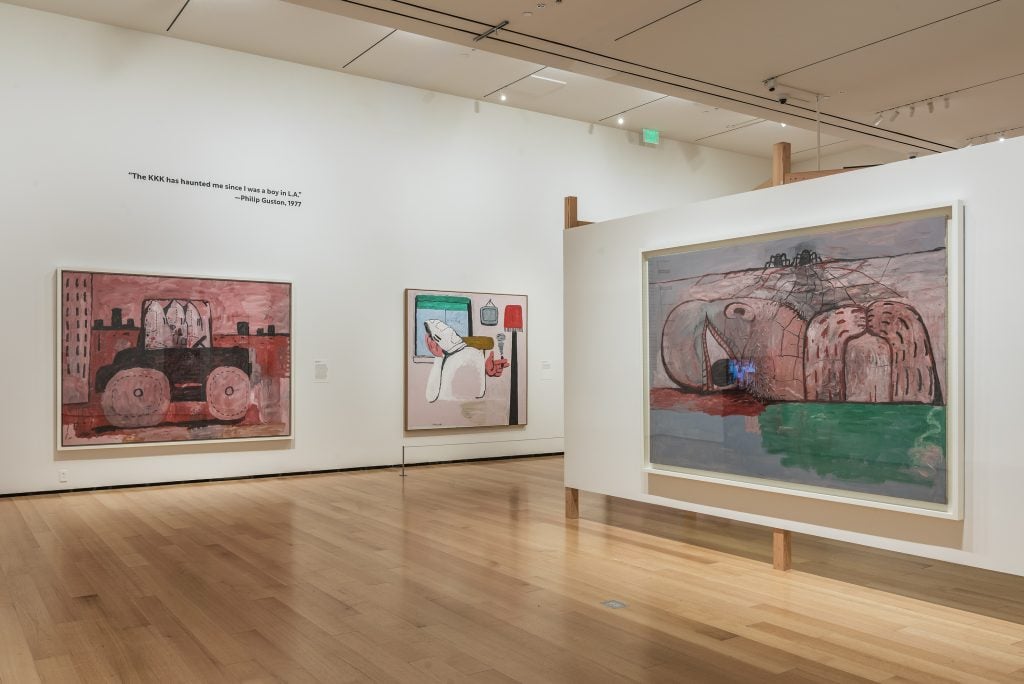
Installation view of “Philip Guston Now” at the Museum of Fine Arts, Boston, Linde Family Wing for Contemporary Art. Photo: © Museum of Fine Arts, Boston.
The curators also use archival material deftly and include only what is completely necessary to tell their story. Three projectors shift through silent news footage from 1968–71, compiling documentation of police attacking protestors at the 1968 Democratic National Convention, American soldiers in Vietnam, and the Kent State Shooting in 1970. These mass media images propelled Guston’s return to figuration. History is also introduced by way of a timeline that contextualizes Guston’s personal biography with the larger social injustice that occurred during his lifetime and in the 42 years since his death in 1980.
The timeline winds through the 20th century’s end in the gallery displaying the Klansmen paintings. Here, it includes a pivotal event in recent museum history: May 16, 2019, when a group of Black and Brown middle schoolers from Helen Y. Davis Leadership Academy were subjected to racist remarks by a museum patron. Boston’s art world remembers this incident, and its inclusion alongside Guston’s images of Klansmen implicates us all. Are we that different from the New York art world of 1970, which was more offended by Guston’s abstract figuration than the Klansmen he depicted?
The timeline concludes with the anti-lynching bill passed by Congress on March 8, 2022. Below the text marking this date hangs The Deluge (1969), a painting acquired by the museum in 1990. In it, Guston depicts an ocean-like expanse of his characteristically ambivalent pink, which he often used to critique the political utility of painting.
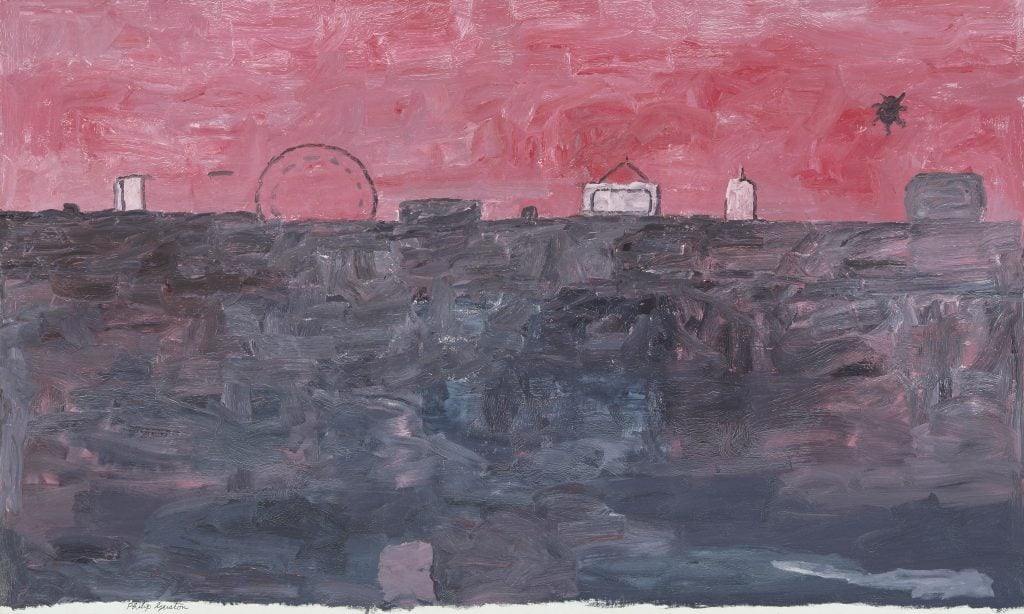
Philip Guston, The Deluge (1969). © The Estate of Philip Guston. Courtesy of Hauser & Wirth. Photo: Museum of Fine Arts, Boston.
The Deluge wasn’t included in the exhibition’s original checklist, and only last summer did museum conservators discover three hooded figures in the underpaint. “This painting now operates not only literally but also metaphorically: hoods (and what they represent) are part of our social fabric as well as our history, present even when ‘invisible,’” the curators explain in the wall text. As our eyes drift from The Deluge back to the timeline, we can read just a few of the names of Black men murdered by police or domestic terrorists since the 1990s.
White supremacy built museums. Downstairs from “Philip Guston Now”, Benin Bronzes of the 32 at the MFA, Boston are on display. A text at the entrance to the Benin Kingdom Gallery tells us that British forces stole these during the looting of the Benin Royal Palace in 1897.
Many encyclopedic museums across the colonizing world have Benin Bronzes in their collections, and many are making moves to return them to Nigeria. The MFA has not. How can we reconcile Guston’s painterly resistance with such cultural theft on unapologetic display? A statement for emotional preparedness might be in order when we enter any museum’s doors, instead of just a temporary exhibition.
“Philip Guston Now” is on view now through September 11, 2022 at the Museum of Fine Arts, Boston.
